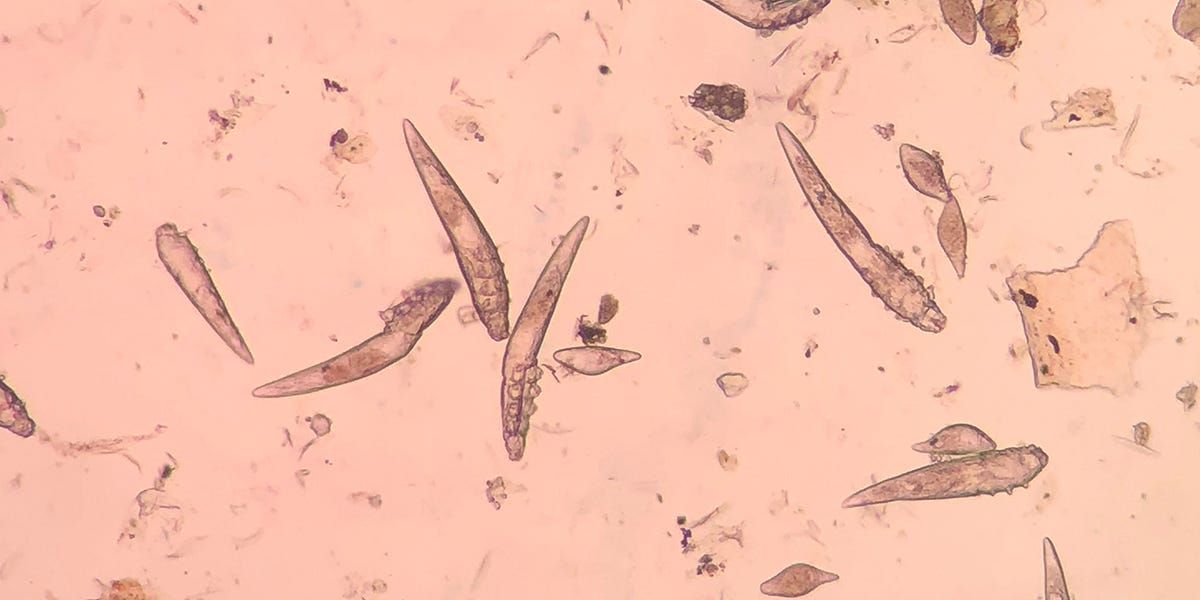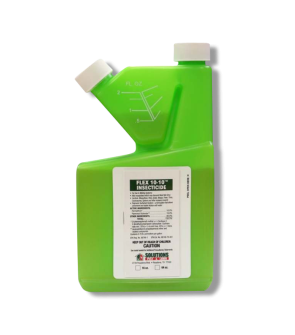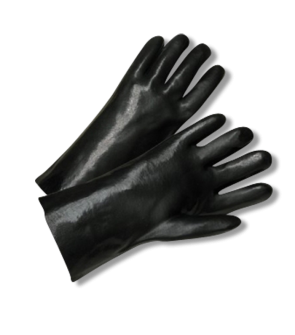Gain access to personalized product screening, the best pricing, rewards, and more!
Most Effective Products
How to Get Rid of Mites On Humans
This page is an expert guide on removing mites in your home using the products and methods suggested by our experienced pest control specialists. Follow this guide and use the recommended products; we guarantee you will successfully eliminate mite invasions.
If you are feeling itchy, it can be difficult to pinpoint the cause of the itch, especially if they are tiny and hard to see--like mites. Mites are microscopic parasites that are widespread throughout the world and come in a variety of forms. While some species of mites are harmless to humans, others can target humans and are very irritating.
There are mites like bird and rodent mites that like to feast on the blood of poultry and mice, dust mites that infest furniture and cause allergies, and scabies that cause intense itching and irritation in humans. No matter what mite you are dealing with, it is important to act quickly to eliminate or drastically reduce its presence.
Identification

Before you proceed with a treatment program, you must ensure that the pests you are dealing with are mites. Misidentification can lead to the use of the wrong treatment methods, which can be a waste of time and money.
- Mite is a catch-all term to describe tiny insect-like organisms that usually cannot be seen by the naked eye. They are parasitic insects that are closely related to ticks, and some species, like the bird mite and chiggers, share similar tendencies of finding an animal host and sucking on its blood.
- Mites go through four phases of development: from egg to larva to egg and, finally, to adult. During the larva stage, they have six legs, but in the nymph and adult stages, they have eight legs.
- Mites come in various forms and usually attack animals, but dust mites can eat human skin flakes. Other mites, like Mange, Demodex, and scabies, may also host humans and can lay eggs on our skin, causing irritation and several different symptoms.
- Other common mites are chiggers, ear mites, and spider mites. Depending on the type of mite you are dealing with, a different method of extermination is required, which may or may not include pesticides.
Inspection

Before you can treat mites, you will first need to investigate which mite is causing the problem since there are so many different kinds. Unfortunately, most are practically invisible because of how small they are. Different mites have different habits, so depending on signs around the homes or symptoms you or your pets are experiencing, you may be able to get a general idea of what mite is present.
Where To Look
Indoors, inspecting your carpeting, furniture, and bedding would be best. Clover mites are known to invade homes and lawns. Dust mites are nearly always in homes and structures and will harbor furniture, pillows, and mattresses, feeding on human dander and dead skin.
For other mites, like itch mites and scabies, you should look at your own body and observe any symptoms like skin irritation, rashes, and bite marks. If you're experiencing allergies around your furniture and sleep area, this could be a sign of dust mites.
What To Look For
Mites are microscopic, so it will be hard to look for them, but you can observe signs of possible mite activity by noting humidity inside your home since mites need moisture, checking your ventilation, and observing if there is an accumulation of dust in the home.
We can often smash clover mites when they crawl over the carpet and leave a red stain. Itch mites cannot be seen or felt when they bite but will leave itchy red marks that resemble a skin rash, so observe if you've been having irritated skin often.
Treatment
For most mite infestations, applying pesticides is unnecessary, and the focus should be more on sanitation, heat treatment, and vacuuming. However, we recommend applying Flex 10-10 Insecticide around your home to kill lingering mites after cleanup.
Step 1: Declutter, Dust and Vacuum

The most important thing you can do to reduce clutter is to clean up in and around the home. Mites can be found virtually anywhere, so you should do your best to declutter any unnecessary items in your home or storage.
After that, you should vacuum your home thoroughly and do so regularly. Vacuum the carpet, curtains, and furniture. Use a powerful vacuum because dust mites, in particular, can burrow into furniture and cling to fabrics, and you want to make sure they get sucked up. Make sure your home is as dust-free as possible, and use a damp cloth or rag to wipe down shelves and other items that collect dust in the house.
Step 2: Heat Treatment and Washing

Steam cleaning or washing items in hot water is a surefire way to kill and eliminate mites of all types. Use a steam cleaner to heat treat your carpeting, furniture, and bedding.
Wash the bedspreads, clothing, and other fabrics in hot water and dry clean them at a high temperature. If mites are on you, take a hot shower with medicated shampoo. Do this regularly if you have been having mite issues and for general cleanliness because this will dramatically reduce or eliminate mites.
Step 3: Apply Flex 10-10
Flex 10-10 is a permethrin and PBO-based insecticide concentrate labeled to kill mites and can be safely used indoors on upholstered furniture and carpeting.
First, determine how much product you need by measuring the square footage of the areas you want to treat. Flex 10-10 should be applied at 3.2 fl. oz. in a gallon of water to treat 1,000 sq. ft.
Once you have calculated the square footage, mix the appropriate amount of Flex 10-10 in a pump sprayer with water and shake the spray tank. Wear PPE before mixing and applying (gloves, long-sleeved clothing, protective eyewear etc.)
Apply to a small test area first to make sure the chemical doesn't stain. Then, after a thorough clean-up, apply an even coating of the Flex 10-10 to any suspected areas and surfaces indoors (furniture, mattresses, curtains, carpeting, shelves, etc.) to kill lingering mites.
You can also apply as a barrier treatment around your home to keep clover mites away. It would be best to wait for the product to dry before re-entering the treated area.
Prevention
Once you have conducted a detailed cleanup and sprayed Flex 10-10 to eliminate mites, keep mites away with preventative measures:
- Seal cracks and crevices around your home to eliminate points of entry for chiggers and clover mites, and take a shower after you have been outside for long periods of time.
- Making sanitation a priority (e.g., regular vacuuming, dusting, washing clothing and fabrics, and regular showering) will keep mites away.
- Spraying a monthly Flex 10-10 treatment can also help with continued mite prevention.
Key Takeaways
What are Mites?
- Mites are parasitic insects that can infest homes and irritate humans with allergies and itchy bites, depending on the species.
- There are many different types of mites, such as bird mites, dust mites, clover mites, chiggers, and more.
- Microscopic mites exist on the bodies of all humans, but they only become a problem when there is an abundance of them.
How To Get Rid of Mites
- Conduct a detailed inspection of your home and observe your symptoms (irritated skin, allergies, etc.) to get an idea of what problem you might have.
- Routine vacuuming, washing, dusting, and spraying Flex 10-10 in problem areas can eliminate mite infestations.
Preventing Mite Reinfestation
- You can present outbreaks of mites with routine cleaning of your home and body, sealing entry points around the house as much as possible, and spraying follow-up treatments of Flex 10-10 at least once a month.
-
Q:What product will eliminate biting mites on my couch?12/10/25
-
Q:1) I think I have dust mites, but, how do I tell what type of mites I have? 2) Honestly.... when it is confirmed of dust mites, what is the best spray to kill these mites? 3) Honest answers are extremely important. Thank you very much.11/14/24











